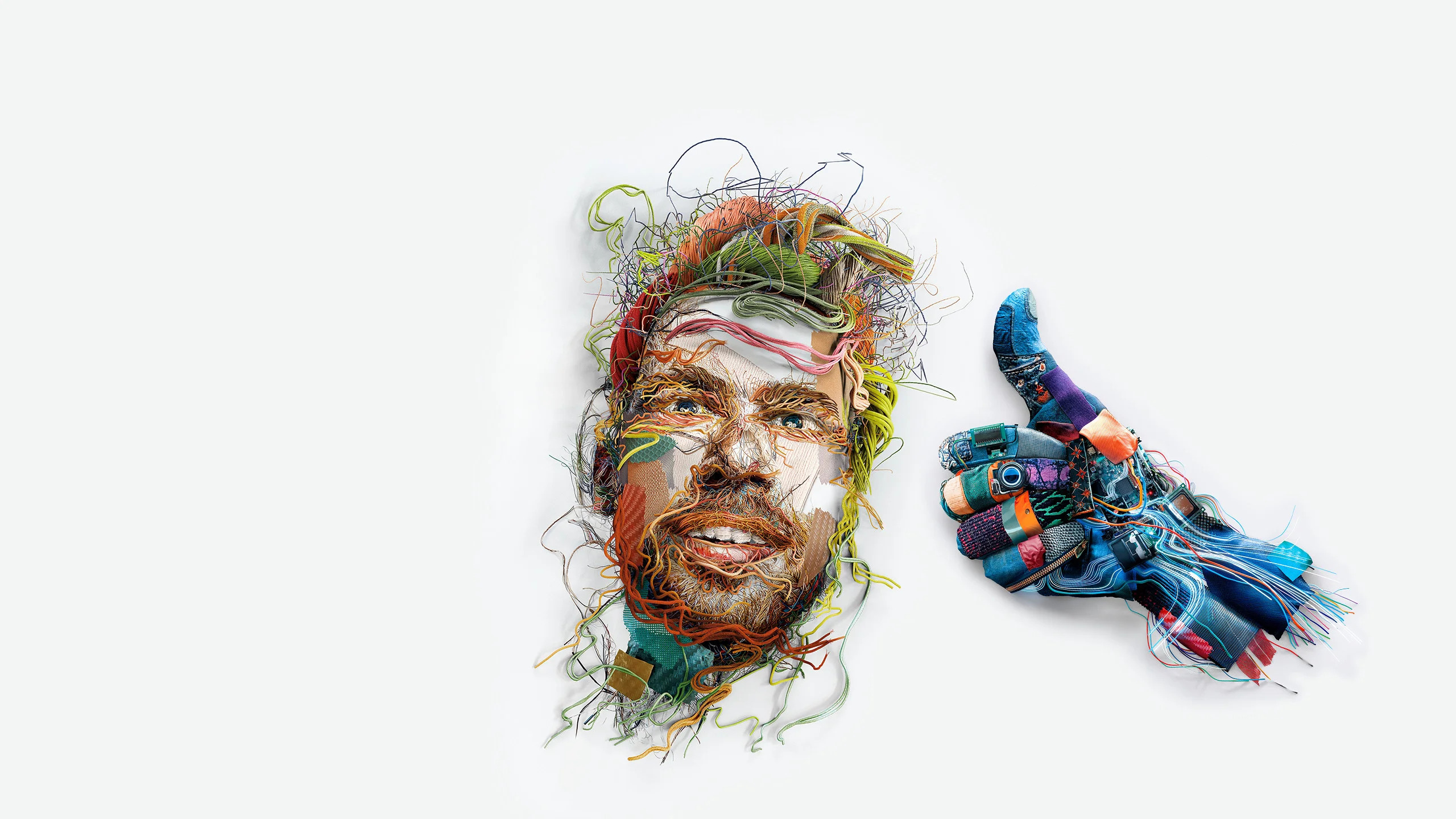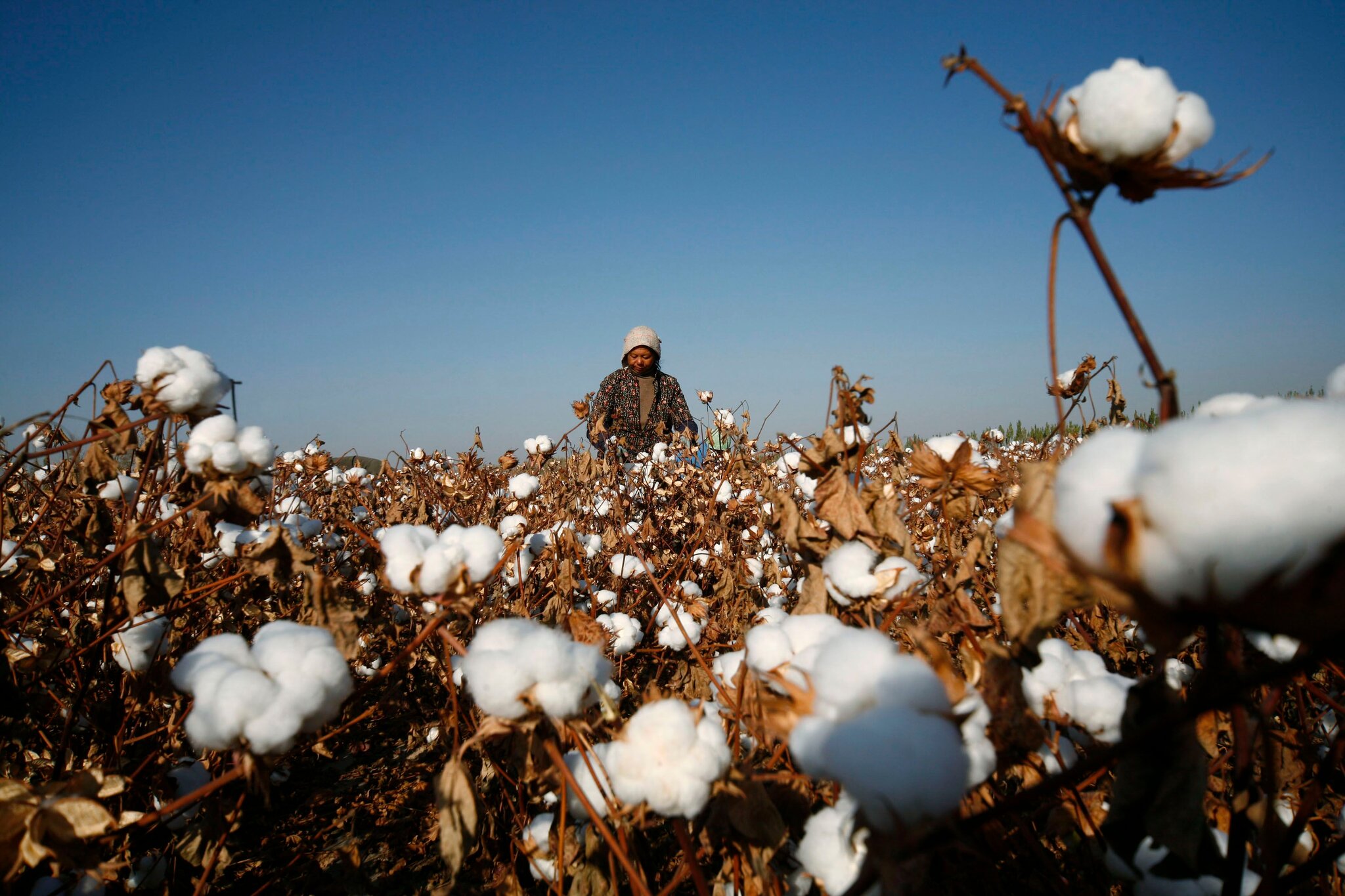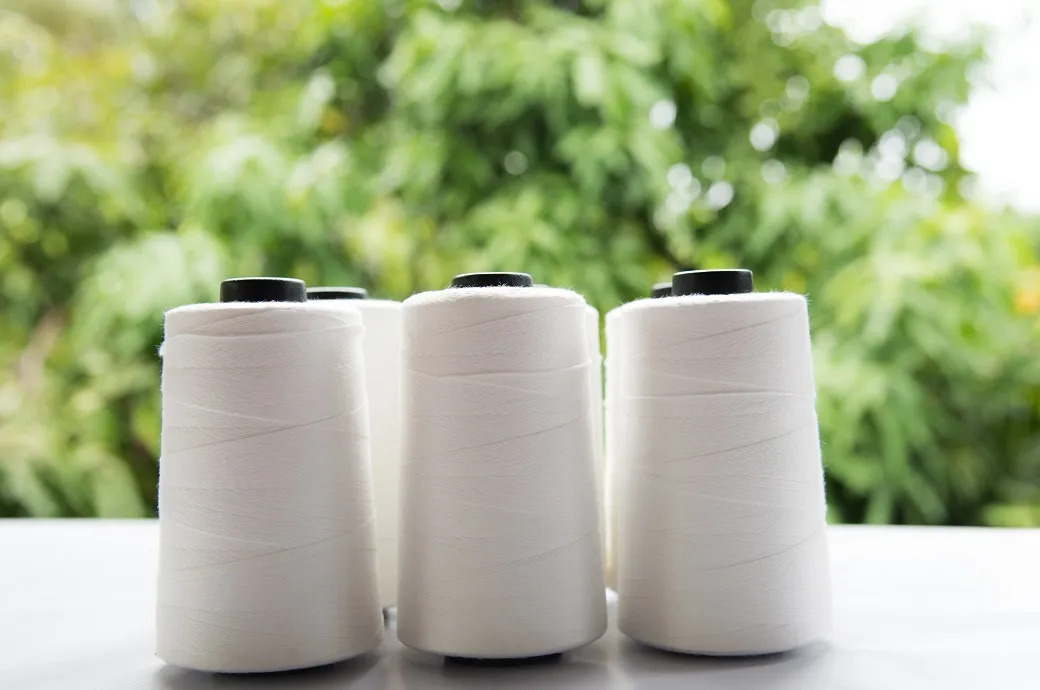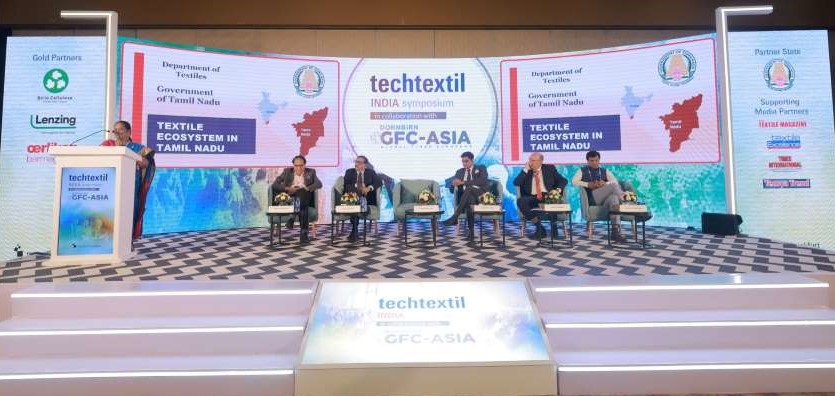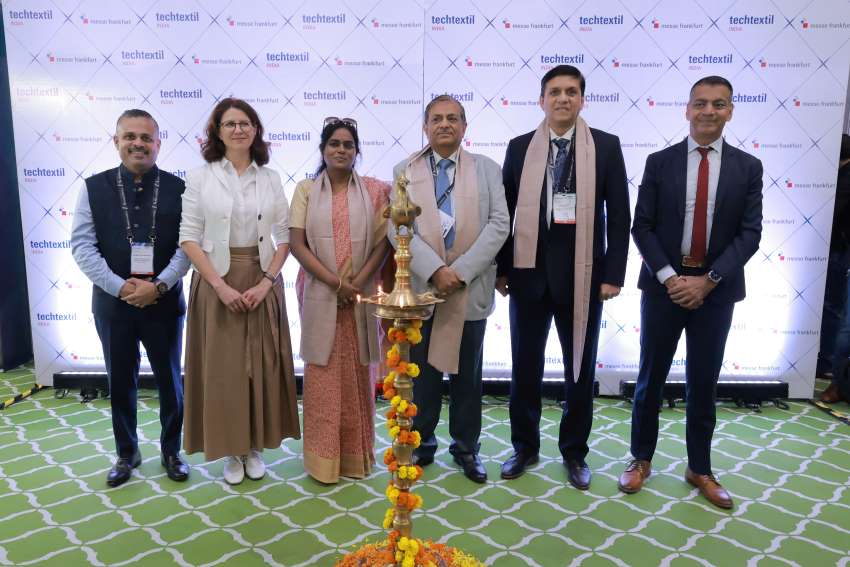FW
![]()
The global textile and apparel industry, one of the oldest and most resource-intensive sectors, is at a crossroads. Once defined solely by low-cost mass production and global export networks, it is now being reshaped by two transformative forces: sustainability and digital innovation. Rising consumer expectations, tightening regulations, and technological breakthroughs are forcing companies to rethink not only how clothes are made, but also how they are sold, used, and recycled. This is not a mere industry adjustment, it is a paradigm shift that could determine which brands thrive and which fade in the coming decade.
Growth amid transformation
Despite mounting challenges, the textile sector continues to grow, underscoring its economic weight in global trade and manufacturing. According to multiple market forecasts, growth remains steady, albeit with regional shifts and structural disruptions.
Table: Global textile market projections
|
Year |
Market Size ($bn) |
|
2024 |
$1.9 - $2.1 |
|
2029 |
$857.6 - $915.9 |
|
2034 |
$4.0 - $4.4 |
Asia-Pacific, home to the world’s largest manufacturing hubs in China, India, Bangladesh, and Vietnam, dominates with more than half the global market share. Yet, regions like North America and Europe are redefining their value proposition by investing in innovation, automation, and nearshoring. This reflects a dual trend: production remains rooted in Asia, while consumer-facing innovation is flourishing in developed economies.
There are several growth drivers that are boosting the sector. Conscious consumers are one of them with rising demand for sustainable, ethically produced garments. The rapid e-commerce expansion with digital platforms enabling borderless retail access has also been a major booster. Then there this the whole aspect of technological integration as AI, blockchain, 3D printing, and automation are powering efficiency.
Breaking the fast fashion cycle
The apparel industry’s take-make-dispose model, popularized by fast fashion, is now under scrutiny. The sector generates nearly 92 million tons of textile waste annually, and contributes up to 10% of global carbon emissions, a figure larger than international aviation and shipping combined.
Brands are facing growing pressure from governments, activists, and consumers to move toward circular business models, where waste is minimized, and materials remain in use for longer.
There are numerous notable case studies of brands working actively towards a sustainable business modes who together, represent a radical departure from the disposable ethos of fast fashion..
• Patagonia's worn wear program: The outdoor apparel company, a pioneer in sustainability, has successfully implemented a comprehensive repair, reuse, and recycling program. Through its ‘Worn Wear’ initiative, Patagonia encourages customers to repair their gear rather than replace it, offers certified used clothing for sale, and provides an avenue for recycling garments at the end of their life. This approach not only reduces waste but also builds brand loyalty by promoting a philosophy of conscious consumption.
• Primark's take-back scheme: In a move to address textile waste, fast-fashion giant Primark introduced a take-back scheme in its UK stores. Customers can return unwanted clothing, footwear, and textiles, which are then re-used or recycled by partners. This initiative helps divert millions of garments from landfills each month and shows how even large-scale, high-volume retailers are being compelled to participate in the circular economy.
• The rise of rental services: Businesses like Rent the Runway and smaller niche players are pioneering an access-based model. Instead of owning an item, consumers can rent it for a specific period. This increases the utilization rate of a single garment, reducing the overall demand for new production and aligning with the principles of a shared, rather than owned, economy.
Supply chain reinvented, from opacity to transparency
Global apparel supply chains, long criticized for low wages, unsafe conditions, and environmental harm, are being forced into the light. Technology is playing a central role in this reinvention, tackling issues ranging from labor exploitation to inefficient inventory management.
Table: Common supply chain challenges and solutions
|
Challenge |
Impact on business |
Technology-driven solution |
|
Lack of Transparency |
Unethical labor, environmental harm, difficulty in tracking products. |
Blockchain: Provides a secure and immutable record of an item’s journey from raw material to final product. |
|
Demand Forecasting |
Overstocking, stockouts, and financial loss. |
Artificial Intelligence (AI): Analyzes historical sales, market trends, and external factors to provide more accurate predictions. |
|
Prolonged Lead Times |
Missed seasonal trends, reduced competitiveness. |
Automation & Digital Platforms: Streamline operations, improve communication, and allow for real-time tracking of production. |
|
Sustainability |
Environmental footprint, consumer and regulatory pressure. |
Digital Printing & Waterless Dyeing: Reduce water usage and waste, offering a greener alternative to traditional processes. |
For many companies, the supply chain has become the battleground where reputations are made or lost. A single scandal whether related to factory conditions or environmental negligence can erode consumer trust overnight.
Industry at an inflection point
The next decade will test whether the apparel sector can align profitability with responsibility. Several trends are emerging as non-negotiables for future success:
Circular design: Moving beyond recycling to design garments with end-of-life in mind.
Digital-first operations: AI-driven forecasting, 3D sampling, and virtual try-ons will define competitiveness.
Localized production: Nearshoring and microfactories could reduce carbon footprints while improving speed-to-market.
Regulatory push: Governments, especially in the EU, are enforcing stricter sustainability and reporting norms.
As one apparel executive recently put it, “The industry is no longer just about selling more clothes it’s about selling the right clothes, made the right way, for the right reasons.”
Stitching the future
The textile and apparel industry is undergoing a once-in-a-generation transformation. Growth will continue, but the terms of that growth are changing. Companies that embrace sustainability, transparency, and digital agility are likely to thrive, while those clinging to outdated fast-fashion models risk irrelevance. The industry’s future will not be written in factories alone it will be sewn together by the choices of consumers, regulators, and innovators who demand that fashion’s next chapter be not just stylish, but sustainable.

The summer of 2025 brought an abrupt end to the modest recovery that China’s apparel industry experienced in the previous year. What was anticipated as a stabilization period turned into a struggle against compounding economic and geopolitical headwinds. From January to July, the main narrative was one of contraction, driven by geopolitical risk, high operational costs, and unprecedented weather disruptions that crippled production schedules during the traditional off-season.
The industry found itself trapped in a difficult transition: manufacturers were investing heavily in future high-tech production (evidenced by the surge in fixed-asset investment), yet their current profits were collapsing under the weight of weak overseas demand and intense price competition. The foundation for recovery, as the industry noted, needed drastic reinforcement.
The production paradox and output decline
The manufacturing heart of the apparel sector, enterprises ‘above a designated size’, showed clear signs of stress. The industrial added value fell by 1.2 per cent year-on-year, a marked increase in decline compared to the first half of the year. This fall was not merely a slowdown but a reversal of the moderate growth seen in 2024 (when industrial added value rose by 0.8 per cent Y-o-Y).
The physical output of garments mirrored this decline, dropping by 0.29 per cent Y-o-Y. This production slump points directly to manufacturers curbing capacity in the face of dwindling orders—a pragmatic response to falling profits, but one that signals deep-seated market anxiety.
The domestic lifeline and digital resilience
Domestically, the consumer remains cautious but present. Total retail sales of apparel goods above the designated size recorded a growth of 2.2 per cent (599.24 billion yuan). While this growth is slow, it is slightly stronger than the full-year 2024 rate of 0.1 per cent, suggesting that promotional activities or new product launches in the first half of 2025 provided a marginal lift.
The true example of resilience was the digital marketplace. Online retail sales of wearable items grew by 1.7 per cent Y-o-Y, growing slightly compared to the first half. This reflects two trends: the Chinese consumer prioritizing value and efficiency (often found online), and manufacturers increasingly relying on direct-to-consumer (D2C) channels to bypass sluggish traditional retail flows.
The export freeze and geopolitical diversification
China’s role as the world's apparel factory faced its most significant challenge from external pressures. Total apparel and accessories exports reached $88.62 billion, declining by 0.3 per cent year-on-year. This negative turn is critical when viewed against the prior year's performance.
Table: China apparel value trends
|
Period |
Export value ($) |
Y-o-Y Change |
Trend Observations |
|
Jan-July 2023 (Estimated) |
$89.7 billion |
Approx -8.2% (vs 2022) |
A sharp decline in export value, likely due to a post-pandemic inventory correction, high inflation, and a general slowdown in demand in key Western markets. |
|
Jan-July 2024 |
$88.98 billion |
-0.8% (vs 2023) |
The decline significantly moderated compared to 2023, suggesting the market was stabilizing after the massive drop in the previous year. |
|
Jan-July 2025 (Input Data) |
$88.62 billion |
-0.3% (vs 2024) |
The export value continues to decline, but the rate of contraction has nearly halted, indicating a strong movement towards market stabilization or a potential return to modest growth. |
The inability to grow exports, even marginally, underscores the success of the global China Plus One strategy, where major Western brands are diversifying sourcing to Vietnam, Bangladesh, and India due to ongoing US-China trade tensions and compliance concerns This shift impacts orders, particularly for low-to-mid-value, labor-intensive products.
The profit crisis vs. the investment bet
The most concerning data point is the dramatic collapse in corporate profitability.
Table: China textile & apparel industry financial performance
|
Indicator |
Jan-July 2025 |
2024 (Full Year) |
Implication (Jan-July 2025 vs. Full Year 2024) |
|
Total Main Business Income |
665.47 billion yuan |
1.27 trillion yuan (+2.76% Y-o-Y) |
Revenue contracting sharply: The 7-month income is barely half of the full 2024 income, indicating significant negative Year-over-Year growth compared to Jan-July 2024. |
|
Total Profit |
25.03 billion yuan |
62.38 billion yuan (+1.54% Y-o-Y) |
Plunge in Profitability: A direct Year-over-Year decline of −14.20% (The decline is not calculated from the full year number, but is the actual Y-o-Y change for Jan-July 2025 vs. Jan-July 2024). |
|
Operating Margin |
3.76% |
4.91% |
Severely Squeezed: The profitability margin fell by −1.15 percentage points (4.91% - 3.76%). |
A 14.20 per cent drop in total profit, alongside a 2.26 per cent revenue decline, suggests extreme margin compression. Companies are likely slashing prices to maintain market share or absorbing higher costs (labor, raw materials, compliance) without being able to pass them on to the final consumer.
In a counterpoint, fixed-asset investment in the garment industry grew by 25.2 per cent year-on-year. This investment is predominantly directed towards high-tech manufacturing, automation, and digitalization, a strategic long-term bet by China to shift the industry's focus from cheap, high-volume production to high-value, fast-response, and smart manufacturing, in line with the nation’s 14th Five-Year Plan focus on high-quality development.
The dual reality of h1 2025
The volatility of the market is best illustrated by the half-year performance of few Chinese listed apparel companies.
Semir Group: Retailer focus
• H1 2025 Revenue Growth: +3.26% Y-o-Y
• H1 2025 Net Profit Decline: −41.23% Y-o-Y
Semir, known for its strong domestic retail presence, successfully managed to increase sales, likely through aggressive promotion or effective product launches. However, the catastrophic decline in profit shows this revenue was bought at a severe cost, either intense discounting, growing marketing expenses, or rising operational costs. This is the clearest example of the profit crisis highlighted in the macroeconomic data.
HLA (Heilan Group): Resilience under pressure
• H1 2025 Revenue Growth: +1.72% Y-o-Y
• H1 2025 Net Profit Decline: −3.42% Y-o-Y
HLA, one of the more established domestic leaders, showed greater resilience. While its profit still declined (reflecting the unavoidable margin pressure), the small magnitude of the drop compared to its peers suggests superior supply chain management, stronger brand loyalty, or better cost controls. HLA's performance serves as a benchmark for stability, but even its core profitability was not immune to the market chill.
Table: China textile & apparel industry performance (Jan-July 2025)
|
Indicator |
Jan-July 2025 |
Jan-July 2024 (Y-o-Y Change) |
Historical Context (FY 2024) |
Trend Direction (Y-o-Y) |
|
Industrial Added Value |
+3.7% |
+3.7% |
Up 0.8% |
Counter-Cyclical Growth |
|
Garment Output (Volume) |
N/A |
-0.29% |
Up 4.22% |
Production Cutbacks |
|
Domestic Retail Sales (Apparel Value) |
599.24 billion yuan |
+2.2% |
1.07 trillion yuan (FY 2024) |
Slow Growth |
|
Exports (Apparel & Accessories Value) |
$88.62 billion |
-0.30% |
US$88.98 billion (Jan-July 2024) |
Export Stall |
|
Fixed-Asset Investment (Textile) |
N/A |
+25.2% |
N/A |
Sustained Upgrade |
|
Total Main Business Income |
665.47 billion yuan |
-2.26% |
Up 2.76% (FY 2024) |
Revenue Decline |
|
Total Profit |
25.03 billion yuan |
-14.20% |
Up 1.54% (FY 2024) |
Profit Collapse |
|
Operating Margin |
3.76% |
−1.15 ppt (vs. Jan-Jul 2024) |
4.91% (FY 2024) |
Margin Squeeze |
The Chinese textile and apparel industry therefore is experiencing a painful structural adjustment. The positive trends in industrial added value and fixed-asset investment highlight a successful government and industry-led push for modernization and high-quality development. However, this is overshadowed by acute commercial pressure from weak global and domestic consumption combined with fierce internal competition, which is driving a sharp collapse in profitability and a severe squeeze on operating margins. The industry is effectively sacrificing current profits for a future position as a higher-end, more automated, and technologically advanced global player.
The Ministry of Textiles has launched the 'Swadeshi Campaign' across India to significantly increase domestic consumption of Indian handloom, handicrafts, and textile products. Running for six to nine months, the campaign aims to reposition Indian textiles as powerful symbols of pride, style, and heritage, particularly among urban youth and Gen Z consumers.
The core goals of the 'Swadeshi Campaign' include stimulating domestic textile consumption, directly empowering weavers, artisans, and textile MSMEs, and aligning with major government initiatives. These initiatives include the Production Linked Incentive (PLI) scheme for textiles, the PM MITRA Parks, and the One District One Product (ODOP) program.
A major focus of this campaign is to encourage institutional support. The campaign will urge government ministries, Public Sector Undertakings (PSUs), and educational institutions to adopt Indian-made textiles for uniforms and furnishings.
The campaign's slogan, ‘Swadeshi fabric is the pride of the nation - this is India’s identity’, will be promoted through various awareness channels, including targeted social media outreach, public events, and partnerships with state governments.
The campaign is strategically timed to capitalize on India's expanding textile and clothing market, which is valued at $179 billion in 2024 and growing at a CAGR of over 7 per cent.
Domestic household consumption currently accounts for 58 per cent of the market and is growing at 8.19 per cent annually, signaling robust consumer demand. By targeting the digitally-savvy youth, the 'Swadeshi Campaign' seeks to accelerate this growth and ensure that local artisans and manufacturers benefit directly from the nation's economic momentum.
Seef Properties has launched the first Kiabi store in Bahrain, at Seef Mall – Seef District. This debut is the result of a partnership with Al Futtaim Group, Kiabi’s regional franchise partner.
Kiabi is globally recognized for offering accessible and stylish fashion for women, men, and children of all ages. The brand's philosophy blends comfort, affordability, and French elegance, offering a comprehensive range of everyday essentials, seasonal collections, footwear, and accessories.
In line with its commitment to sustainability, Kiabi integrates eco-conscious practices into its operations. A significant portion of its products are made from environmentally friendly fibers, with the long-term goal of transitioning all collections to sustainable materials.
With existing stores in the UAE and Kuwait, this new Bahrain location strengthens Kiabi’s overall presence in the GCC region, bringing its unique fashion philosophy to a new audience.
Duaij Al Romaihi, Chief Commercial Officer, Seef Properties, states, welcoming Kiabi is a key step in their strategic redevelopment plan to revitalize the mall. This addition enhances the brand’s position as a leading shopping and leisure destination in Bahrain, he notes, adding, it reflects the company’s ongoing efforts to attract top-tier global brands.
Simon Naga, Vice President -Asia and Fashion, Al-Futtaim Group, call this launch a ‘key milestone’ in their GCC growth strategy. The company aims to offer a memorable shopping experience that blends the latest fashion trends, high-quality products, and French flair—all at affordable prices, he adds.
Since its inception in 1997, Seef Mall – Seef District has remained a premier shopping and entertainment destination, continuing to attract visitors from across the GCC with its diverse mix of international brands and family-friendly options.
The Indian Textile Accessories and Machinery Manufacturers' Association (ITAMMA) held its 82nd Annual General Meeting (AGM) on September 24, 2025, in Mumbai, with a dual focus on critical industry issues: Packaging Aspects and preparing the sector for 'Viksit Bharat 2047.'
ND Mhatre, Director General (Tech) ITAMMA, highlighted, customer rejections due to poor packaging remain a major complaint, especially with textile machinery increasingly featuring delicate electronic components. To address this, ITAMMA hosted Dr Babu Rao Guduri from the Indian Institute of Packaging (IIP), a national apex body established by the Ministry of Commerce. Dr. Guduri provided detailed insights and case studies on the importance of robust and sustainable packaging for promoting exports.
Omprakash Mantry, President, ITAMMA noted, comprising roughly 3,000 units and expected to reach $2.02 billion by 2033, the Indian textile machinery industry needs to innovate in packaging materials like woven sacks and FIBCs, and adopt eco-friendly, paper-based alternatives to reduce polymer dependence.
The AGM also featured consultant Avinash Mayekar of Suvin Expo LLP, who presented a strategic roadmap for the Indian Textile Engineering Industry (ITEI) to contribute to the nation's 2047 vision.
The national textile goal is ambitious: $600 billion in textile exports and a $1.8 trillion domestic market. Mayekar stressed, achieving this requires ITEI to maximize its global market share through strategic initiative like import substitution, technology and OEM development, and infrastructure creation.
The technology areas that need to be specifically focused include: manmade fiber spinning (airjet, open-end), high-speed weaving (rapier, airjet, waterjet looms), state-of-the-art processing range, and advanced technical textiles machinery.
In a related event, ITAMMA launched the 'Innovation Scouting Mission' in association with the ‘BK Mehta Endowment Fund.’ This initiative allows students from textile institutes to work in member factories for a day or two to explore and develop innovative solutions for increasing productivity and reducing costs. This mission, an extension of the previously successful 'BK Mehta Technology Networking Mission-2030' series, aims to directly connect academia, industry experts, and government bodies to foster the next generation of textile engineering innovation.
The inaugural edition of the bilateral Bangladesh-China Green Textile Expo 2025 (BCGTX) is scheduled to be held from October 23–25 at the International Convention City Bashundhara (ICCB) in Dhaka.
A joint venture between Savor International and the Chinese Enterprises Association in Bangladesh (CEAB), the event will have Bangladesh Garment Manufacturers and Exporters Association (BGMEA) as the Knowledge Partner.
Focusing on Man-Made Fibers (MMF), the exhibition will emphasize innovation, sustainable manufacturing practices, and opportunities for greener production within the textile industry. BCGTX is also teaming up with global initiatives, such as Shanghai Climate Week, to underscore Asia’s position and China’s actions on climate change.
Distinguished professors and experts are scheduled to participate in seminars and sessions, where they will share insights to support sustainable textile development.
The event marks a significant milestone in the more than 50-year diplomatic relationship between Bangladesh and China, aiming to further strengthen cooperation and open new avenues for growth.
European Committee of Textile Machinery Manufacturers, Cematex is significantly expanding its influence and commitment to the future of the EU textile machinery industry. Officially registered in the EU Transparency Register, the organization is boosting its engagement with European Union institutions and stakeholders. As a part of its reinforced presence, Cematex is actively participating in the EU Sustainable Textiles Transition Pathway, pledging support for a greener European textile ecosystem. The group has also joined the EU Textiles Ecosystem platform to ensure stronger connections within the broader EU textiles community.
In response to the evolving legislative landscape, Cematex is closely monitoring key EU initiatives that will shape the upcoming EU textile strategy. These include the Eco-Design Regulation (Textile Delegated Act), the implementation of the Waste Framework Directive across member states, the development of the Product Environmental Footprint Category Rules for apparel, and reforms to market surveillance and customs.
A major focus for Cematex is trade advocacy, particularly addressing hurdles in major markets. The organization is actively challenging the Indian Omnibus Technical Regulation, which mandates compulsory certification by the Bureau of Indian Standards (BIS) for weaving and embroidery machines.
The organization has also submitted a position paper to the Indian Ministry of Heavy Industries and is lobbying for a postponement of the regulation. Simultaneously, it is pushing the European Commission to secure tariff-free access for EU textile machinery exports to India.
On the European front, Cematex has coordinated with industry allies (CECIMO, Orgalim, and CECE) to press the European Commission to classify India's compulsory certification as a Technical Barrier to Trade (TBT) at the WTO, calling for its removal.
The organization is also strengthening its efforts in market surveillance against non-compliant imports. It has developed a position paper for all 27 EU Member State Market Surveillance Authorities (MSAs) and is creating documentation to help identify likely sources of non-compliance.
Furthermore, a new Machine Safety Committee is being established to collect evidence and develop awareness materials for MSAs, customs officers, and even customer associations regarding the risks of non-compliant imported machinery.
Alex Zucchi, President, Cematex notes, his comprehensive engagement is vital to ensure a competitive, sustainable, and innovative future for the European textile machinery industry.
Tonello will launch its new sustainable luxury denim collection, ‘Denim Renaissance: A Journey Into Italian Luxury’ at Kingpins New York on January 22-23, 2026. This new collection reimagines denim as a vibrant medium for self-expression, blending intricate embellishments, sumptuous textures, and opulent gold accents as a direct tribute to Italy's rich and enduring creative heritage.
More than just a fashion statement, Denim Renaissance is a commitment to a thoughtful, conscious future. Tonello showcases how artistry and environmental care can exist seamlessly through the use of innovative and responsible technologies.
Inspired by the boundless beauty and cultural richness of Italy, the collection seeks to redefine luxury. It achieves this through a captivating interplay of curiosity, innovation, and timeless Italian craftsmanship. Every detail is designed to tell a story, with textures exuding sophistication and gold accents capturing the enigmatic allure of Italian artistry.
Ultimately, ‘Denim Renaissance’ represents a place where tradition meets the future, demonstrating how heritage techniques can intertwine with groundbreaking responsible innovations. It invites attendees to experience a world where style is not only beautiful but deeply thoughtful.
A crucial international platform, The Taipei Innovative Textile Application Show (TITAS) emphasizes Taiwan's advanced capabilities in performance and sustainable textiles. According to Justine Huang, President, Taiwan External Trade Development Council (TAITRA), the show connects Taiwan's industry with global partners, including the rapidly growing Indian market.
For over two decades, TITAS has been a beacon of textile innovation. Over the last three years, its focus has increasingly centered on high-performance and sustainable solutions. This shift reflects Taiwan’s direct response to global demands for more functional and eco-friendly fabrics, a trend driven by the urgent need to address climate change.
This transformation into a hub for sustainable solutions underscores Taiwan’s commitment to tackling environmental challenges through technological breakthroughs. By consistently attracting major international brands and retailers, TITAS functions as a critical junction for business opportunities worldwide.
Taiwan’s textile industry is highly export-oriented, necessitating a constant push into global markets. The industry boasts a fully integrated value chain, spanning from raw materials (upstream) to manufacturing (midstream) and finished products (downstream), notes Huang. This comprehensive structure allows Taiwanese firms to offer innovative products and end-to-end services to their international clientele, he adds.
To maintain its competitive edge as a leading global supplier of high-quality textiles, Taiwanese companies have aggressively invested in research and development (R&D). This strategic commitment to innovation ensures the industry not only drives its own growth but also remains aligned with global trends demanding advanced functionality and robust sustainability in textiles.
At an outreach program focused on strengthening trade ties with the United Kingdom, Ajay Bhadoo, Director General of Foreign Trade (DGFT) and Additional Secretary, Ministry of Commerce and Industry urged Micro, Small, and Medium Enterprises (MSMEs) to seek out new global markets and deepen their integration into international supply chains.
Titled 'Gateway to Growth: Harnessing Opportunities under India–UK CETA', the event brought together government officials, diplomats, and major Export Promotion Councils (EPCs) to discuss the transformative potential of the impending Comprehensive Economic and Trade Agreement (CETA).
Anna Shotbolt, Deputy Trade Commissioner for South Asia, British High Commission, hailed the CETA as a milestone and advised Indian exporters to prioritize sustainability and quality compliance to successfully enter the UK’s premium market segments.
Abhishek Dev, Chairman, APEDA, informed, the agri-food sector sees the CETA as a gateway to niche UK categories, including organic produce, ethnic foods, and ready-to-eat products, according to APEDA Chairman Abhishek Dev.
The Gems & Jewelry sector is focused on positioning luxury Indian items in the UK retail landscape. Handicrafts and Carpets are expected to secure niche spaces in the premium UK market while Engineering Goods and Auto Components have strong potential, with success hinging on innovation and strict compliance, he added.
Shotbolt further opined, the Apparel and Textiles sector can boost exports significantly by aligning with ethical and sustainable sourcing standards, a growing requirement for UK buyers.
Ultimately, organizations like the Federation of Indian Export Organizations (FIEO) urged exporters to look beyond traditional markets, embrace digital tools, and leverage the multi-sector opportunities that the CETA is expected to unlock.

